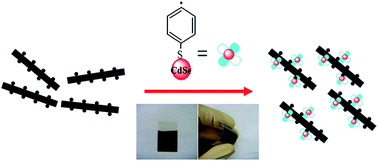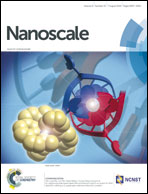Comparative experiments of graphene covalently and physically binding CdSe quantum dots to enhance the electron transport in flexible photovoltaic devices
Abstract
In this research, we prepared composite films via covalent coupling of CdSe quantum dots (QDs) to graphene through the direct binding of aryl radicals to the graphene surface. To compare the carrier transport with the CdSe aryl binding graphene film, we prepared CdSe pyridine capping graphene films through the pi–pi interactions of noncovalent bonds between the graphene and pyridine molecules. The photovoltaic devices were fabricated from the two hybrid films using the electrophoretic deposition method on flexible substrates. Even though the two hybrid films have the same amount of QDs and graphene, time-resolved fluorescence emission decay results show that the emission lifetime of the CdSe aryl group binding graphene film is significantly shorter than that of the pyridine capping CdSe–graphene. The quantum efficiency and photocurrent density of the device fabricated from CdSe aryl binding graphene were also higher than those of the device fabricated from pyridine capping CdSe–graphene. These results indicated that the carrier transport of the QD–graphene system is not related to the additive effect from the CdSe and graphene components but rather is a result of the unique interactions between the graphene and QDs. We could expect that these results can be useful in designing QD–graphene composite materials, which are applied in photovoltaic devices.


 Please wait while we load your content...
Please wait while we load your content...